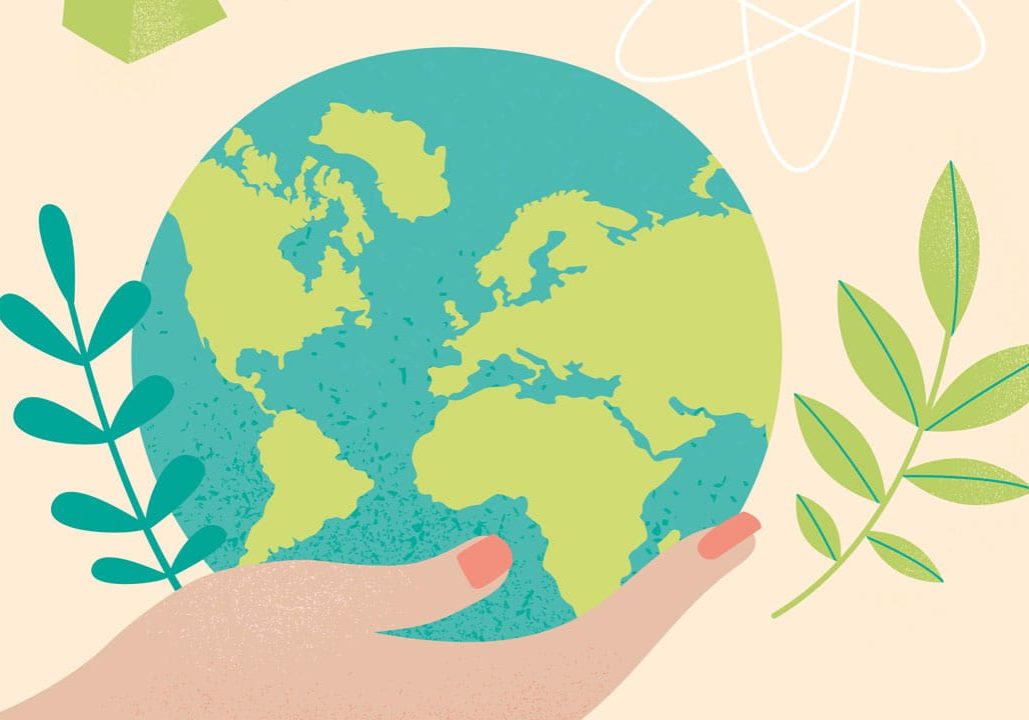A Yogi’s Guide To Saving The Planet

A Yogi’s Guide To Saving The Planet
What’s loving the environment got to do with yoga? By Deana Morri
Remember your first taste of yoga? Grappling with postures in a studio or community hall, most likely, and wondering how on earth down-dog could be for ‘resting’ and when were you ever going to get to lie down again?
But as we develop in our practice, connecting movement with our breath, feeling our way into deeper relaxation, we may start to realise there is much more to yoga than shaking arms and wobbling legs.
Yoga’s roots dig deep into history, perhaps as far back as 3,000 BCE and while its philosophical texts have ebbed and flowed in popularity over the centuries, one of the earliest and best known is Patanjali’s Yoga Sutras.
The Sutras refer to eight branches of yoga and the one we usually learn first in the West, Asana, the physical postures, is actually the third of these branches. This philosophical text, which you could think of as a very old guidebook to meaningful living, describes the first two limbs as the Yamas and Niyamas; dos and don’ts for a more easeful life, if you like.
And the first of the Yamas, the ethics of yogic living, is Ahimsa which means ‘non-violence’.
Yoga was once largely practiced outdoors and is deeply rooted in nature. Just like down-dog, many of yoga’s asana are named after animals. Prana, yoga’s all-pervasive energy, is very much a primal force of nature.
We may have taken yoga indoors, but yoga is a child of nature; it’s not hard to see why loving our wider environment and doing our best not to harm it is at the roots of yoga.
Letting go
Questions we can all ask ourselves:
Could I consume less? We may be familiar now with questioning the manufacturing processes involved in what we consume. Where it has come from and who has made it.
But do we really need a car? Could we walk more and hire a car or car-share when we really need one? Maybe not today, but how about in a few years?
Could we waste less food?
The government’s waste advisory body, Waste and Resources Action Programme, reported last year that UK households still waste 4.5m tonnes of food a year that could have been eaten, worth £14bn. This amounts to £700 annually for an average family with children. Do we really need to eat meat or dairy, or are we more addicted to the sensation in our mouth that is gone as soon as we swallow? Could we try one meat-free day a week?
And what about that cosy wood-burning stove?
They look lovely don’t they, but in January this year The Guardian newspaper reported on research which claimed wood-burning stoves were creating dangerous levels of pollution inside and outside our homes. Do we really need it on if we have an alternative?
Taking a breath
Just opening up our mind and heart to possibility is a huge step. Our passions and commitments develop as we grow. Look at fashion designer Vivienne Westwood. One-time punk princess, she is now a matriarch of environmentalism, fiercely declaring that climate change is her priority.
If an idea feels uncomfortable then it may be worth sitting with because that’s often the first feeling of growth. Feelings aren’t always comfortable, but that doesn’t mean they won’t serve you in the long run.
Yoga doesn’t tell you what to do. How you take your environmentalism into your yoga is your choice and journey. Yoga is not there to judge you and let’s remember Ahimsa to the self is central to our development.
Those ideas taking root, creating space for themselves, challenging us; they will feel strange.
As strange and as challenging as down-dog once did, many yoga classes ago. And look how far you’ve come since then.
Deana Morris is a yoga teacher, hypnotherapist, and editor of BWY’s membership magazine (bwy.org.uk). She’s a trained Menopause Yoga teacher and a passionate advocate of positive ageing. Find her at: deanamorristherapies.com




